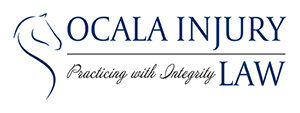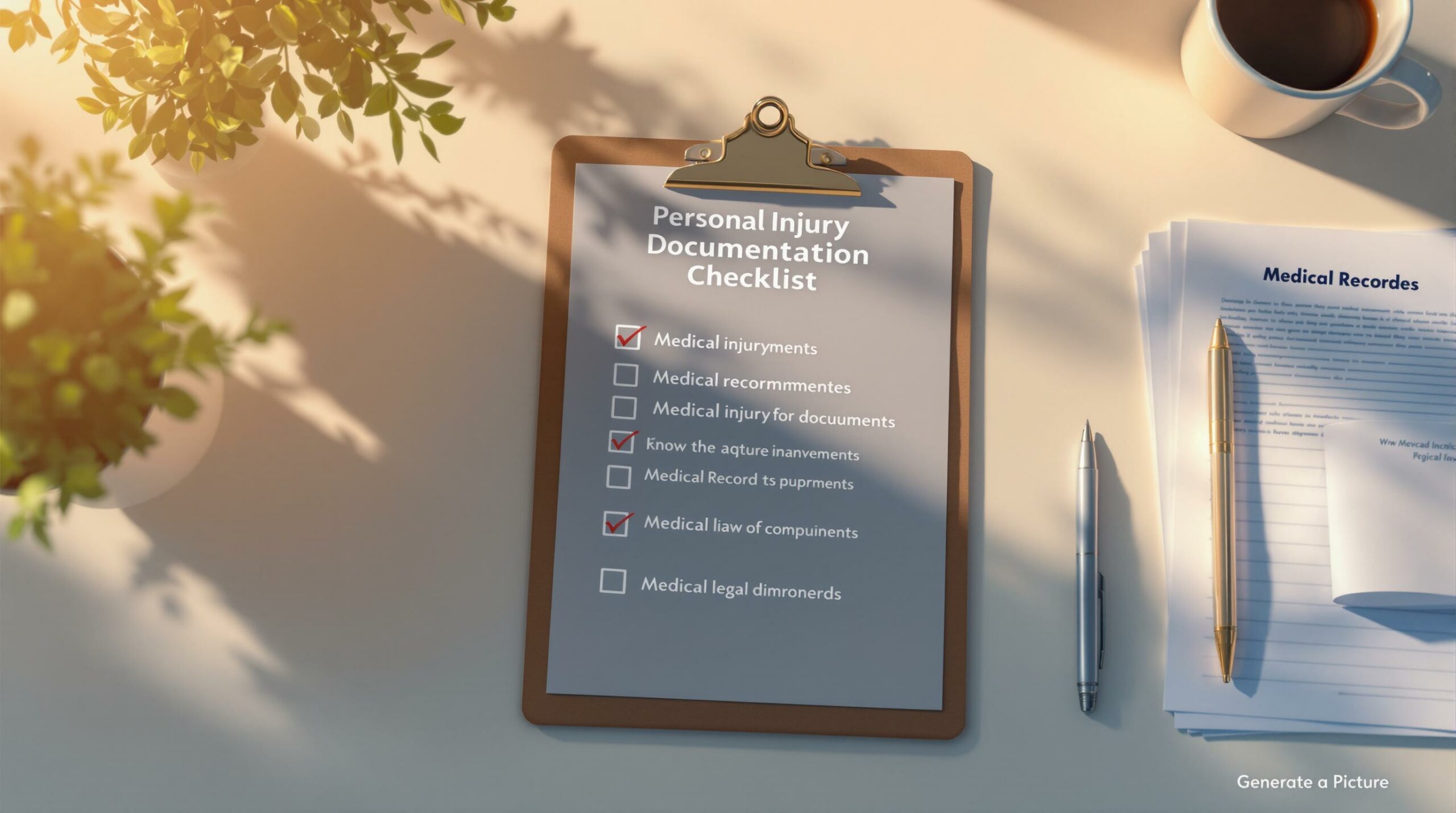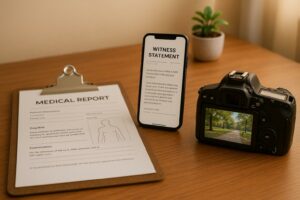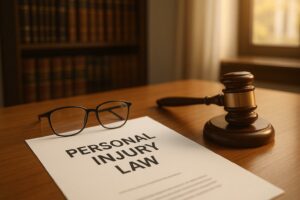Keeping thorough documentation is essential for a successful personal injury claim. The right records can prove your injuries, expenses, and losses, while also strengthening your position when negotiating with insurers. Here’s a quick guide to what you need:
- Medical Records: Collect all treatment records, diagnostic results, and future care estimates. Track expenses like doctor visits, therapy, medications, and medical equipment.
- Accident Evidence: Secure police reports, photos, videos, and physical evidence (e.g., damaged belongings, clothing).
- Witness Information: Record statements, contact details, and observations from witnesses and professionals like medical experts or accident reconstruction specialists.
- Insurance & Work Records: Organize policy details, claim documents, and proof of income loss (e.g., pay stubs, employer letters).
- Personal Records: Keep a pain journal, expense logs, and an appointment calendar to document how the injury affects your daily life.
Why it matters: Proper documentation helps establish a clear timeline, validate your claim, and maximize your compensation. Stay organized with both digital and physical copies to ensure nothing is missed.
Medical Records and Bills
Medical records are crucial for proving how an accident caused your injuries and supporting your claim.
Key Medical Documents to Collect
Make sure your file includes the following:
- Initial Treatment Records: Emergency room reports, ambulance records, and notes from first responders.
- Ongoing Care Records: Documentation from follow-up visits, specialist appointments, and therapy sessions.
- Diagnostic Results: X-rays, MRIs, CT scans, lab results, and other imaging or test reports.
- Treatment Plans: Written recommendations, prescribed medications, and care instructions from your providers.
Organizing Medical Bills
Keep track of all medical expenses using this breakdown:
| Expense Category | Examples | Documentation Needed |
|---|---|---|
| Direct Medical Care | Doctor visits, hospital stays, surgeries | Bills and receipts |
| Rehabilitation | Physical or occupational therapy | Session summaries, progress notes |
| Medications | Prescriptions, over-the-counter drugs | Pharmacy receipts, prescription records |
| Medical Equipment | Crutches, braces, wheelchairs | Purchase receipts, rental agreements |
To stay organized:
- Set up both digital and physical folders for each medical provider.
- Use a master spreadsheet to track all expenses.
- Store original documents securely and work with copies.
- Clearly label and date every record.
Future Medical Care Documentation
Plan ahead by documenting your treatment timeline, including any surgeries, follow-up procedures, therapy sessions, and ongoing medication needs.
Ask your healthcare providers to provide:
- Cost estimates for upcoming procedures.
- Expected rehabilitation expenses.
- Details on long-term medication needs.
- Notes on potential complications that could require further treatment.
Accident Documentation
Thoroughly documenting accident details is crucial for building a strong personal injury case. Here’s how to gather and preserve key evidence effectively.
Police Reports
Getting the official police report is a top priority. This document provides an objective account of the accident and typically includes:
- Date, time, and location of the incident
- Names and contact details of all parties involved
- Information about the vehicles (make, model, year, license plate numbers)
- Weather and road conditions at the time
- The officer’s initial assessment of fault
- Witness statements and their contact information
If the police don’t arrive at the scene, you can file a report at your local station. Always review the report carefully for any mistakes and request corrections if needed. To strengthen your case further, back up the report with visual evidence.
Photos and Videos
Visual evidence can significantly support your claim. According to Recovery Law Center:
"Photos are some of the best and clearest evidence in any accident case."
Be sure to photograph the following:
| What to Photograph | Details to Capture | Why It Matters |
|---|---|---|
| Vehicle Damage | All sides and interior damage | Shows the severity of the collision |
| Accident Scene | Skid marks, debris, traffic signs | Establishes the context of the accident |
| Environmental Factors | Weather conditions, lighting | Highlights contributing factors |
| Personal Injuries | Visible wounds or bruises | Tracks injury progression |
Take photos from various angles and distances to ensure a full picture of the scene. Videos can also add valuable context.
Physical Evidence Storage
Preserve any physical evidence carefully. Start by logging every item and storing it in labeled, sealed containers in a cool, dry place. Photograph each item before storage. Examples of physical evidence include:
- Damaged personal belongings from the accident
- Torn or bloodied clothing worn during the incident
- Any other objects relevant to the case
Label each container with the date, time, location of collection, a brief description, and your contact details. Properly stored evidence can make a big difference in your case.
Witness Information
Getting accurate witness accounts can strengthen your claim significantly.
Witness Contact Details
At the scene of the accident, make sure to collect the following from each witness:
| Information Type | Details to Collect | Additional Notes |
|---|---|---|
| Basic Contact | Full name, phone number, address | Try to get multiple contact methods |
| Statement Details | Date, time, and location of statement | Have the witness sign and date each page |
| Observation Points | Where they were during the incident and their view | Note any visibility limitations |
| Relationship Status | Connection to anyone involved | Document any potential biases |
You can use your phone to record their statements or jot down notes. Experts emphasize the importance of gathering detailed witness accounts as soon as possible.
When recording written statements, make sure to include:
- The witness’s exact location during the incident
- What they saw and heard
- Their opinion on fault, supported by reasoning
- Details like weather conditions or other relevant factors
Professional Witness Records
Beyond immediate witnesses, professional observations can further support your case.
- Medical Experts
Medical professionals can provide crucial documentation, including:
- Injury evaluations
- Recommended treatments
- Long-term health predictions
- Details on any future medical needs
- Accident Reconstruction Specialists
These experts analyze the technical aspects of the accident, such as:
- Damage patterns on vehicles
- Calculations of impact forces
- Environmental factors that contributed
- The sequence of events leading up to the crash
Expert testimony during the discovery phase can significantly strengthen your case.
Keep detailed records of the following:
- Professional credentials
- Dates of consultations
- Written reports
- Any diagrams or visual aids
- Contact information for follow-up
sbb-itb-68ed374
Insurance and Work Records
Strengthen your claim by pairing medical and accident evidence with detailed insurance and income records.
Insurance Documents
Organizing your insurance documents is critical. Keep them in a dedicated folder for easy access. Here’s what to include:
| Document Type | Key Details to Include | Purpose |
|---|---|---|
| Policy Information | Policy numbers, coverage limits, effective dates | Verifies available coverage |
| Claims Documentation | Claim numbers, filing dates, adjuster names | Tracks claim status and updates |
| Communication Records | Dates, times, representative names | Logs all interactions |
| Coverage Denials | Denial reasons, appeal deadlines | Helps with dispute resolution |
Maintain a log of every interaction with your insurer, noting the date, time, representative’s name, and a summary of the discussion. This ensures accuracy and avoids discrepancies. Combining these records with work-related documents strengthens your evidence.
Income Loss Records
To demonstrate financial loss, gather documents like employer letters, tax returns, pay stubs, and, if self-employed or on commission, additional records like business tax returns or client contracts. Key items to collect:
- Employer letter with:
- Job title and pay rate
- Normal work schedule
- Hours missed due to the injury
- Anticipated return date
- Financial records, including:
- Tax returns (personal and business)
- Pay stubs and direct deposit details
- Commission statements
- Client contracts
- Bank statements showing income trends
Also, document opportunities lost because of your injury, such as:
- Canceled projects
- Missed client meetings
- Unfulfilled contracts
- Skipped promotional events
Keep these records organized with your other evidence to build a strong case file. Proper documentation can make all the difference.
Personal Records
Keeping detailed personal records can help demonstrate how your injury impacts your daily life. Here’s a breakdown of what to document and why it matters.
Pain and Recovery Notes
Maintain a daily journal to track your recovery process. Focus on specific details in these key areas:
| Category | Details to Record | Purpose |
|---|---|---|
| Pain Levels | Location, intensity (1-10), duration | Tracks changes in your condition over time |
| Movement Issues | Limited mobility, assistance needed | Highlights physical limitations |
| Daily Activities | Tasks affected, modifications needed | Shows how your lifestyle has been altered |
| Emotional State | Mood changes, stress levels | Documents mental and emotional effects |
"The legal process can take a great deal of time in Florida and you may not be able to remember the details of your experiences during your time waiting for trial. If you can keep detailed notes about your injuries, you will help your attorney get the best results for you." – Madalon Law
Update your journal multiple times a day. Be specific – don’t just write "felt pain." Instead, note something like, "Sharp lower back pain, level 8, lasted 2 hours after climbing stairs."
Expense Records
Keep a folder dedicated to all expenses tied to your injury. Here’s what to include:
| Expense Type | Documentation Needed | Examples |
|---|---|---|
| Medical Supplies | Receipts, prescriptions | Bandages, medications, mobility aids |
| Transportation | Receipts, mileage logs | Uber rides to appointments, parking fees |
| Home Modifications | Invoices, contracts | Wheelchair ramps, grab bars |
| Additional Services | Service agreements, bills | House cleaning, meal delivery |
"Remember that anything counts as long as it can be traced back to your accident or your injuries."
Appointment Schedule
Keep a detailed calendar of all appointments related to your injury. Include:
- Medical Visits: Note provider names, locations, and treatment notes.
- Therapy Sessions: Record exercises and progress updates.
- Legal Meetings: Track consultation dates and document deadlines.
- Follow-up Care: Include scheduled procedures and recovery milestones.
For each appointment, make sure to record:
- Provider’s name and contact information
- Treatment recommendations and next steps
- Any updates to your treatment plan
- Homework or exercises assigned during the visit
These records not only help you stay organized but also provide crucial evidence to support your case.
Conclusion
Take a moment to review the checklist to ensure you’ve accounted for every critical document. Proper and organized documentation plays a major role in proving your injuries and securing fair compensation. As legal experts emphasize, "Documentation will need to prove your specific injury, related treatment and expenses, and the nature of the accident that caused your injury".
Lacking the right documentation can hurt your claim. Here’s why these records matter:
| Documentation Impact | Why It Matters |
|---|---|
| Evidence Timeline | Tracks your injury and recovery in chronological order. |
| Claim Validation | Serves as proof of your expenses and losses. |
| Memory Support | Helps recall key details even months after the incident. |
| Settlement Value | Strengthens your position when negotiating with insurers. |
"Long term documentation of your injuries and related care helps prove your case and can enhance the value of your claim so that you receive fair compensation and reimbursement of losses."
From medical records to daily journals, every detail adds strength to your case. Keeping accurate and consistent records ensures that the full extent of your damages is clear.
Ocala Injury Law is here to help you organize and present your evidence effectively, giving your claim the best chance for success.




